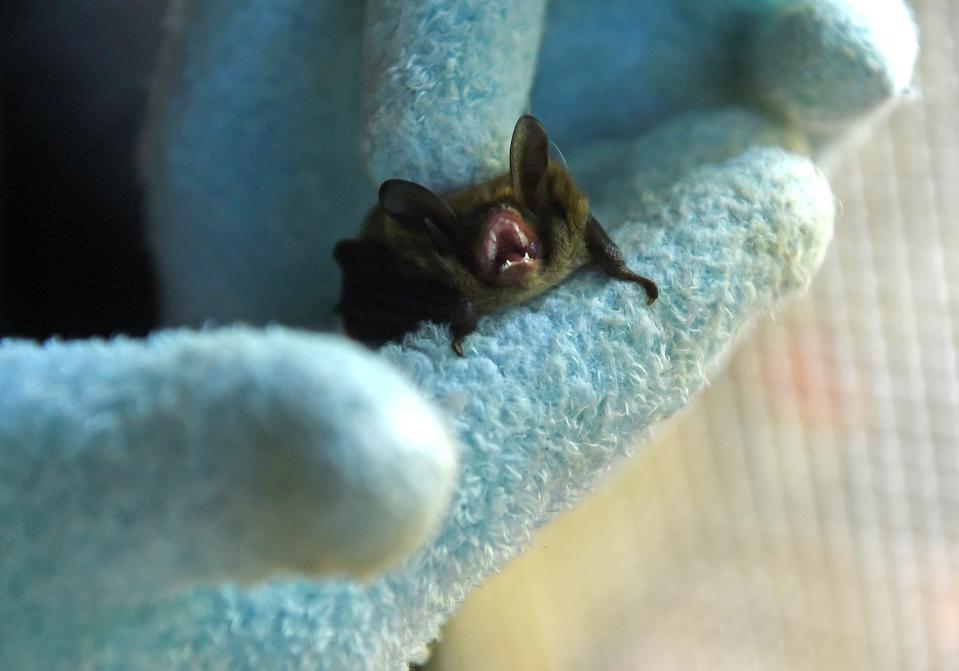This animal hides in the dark, but it’s vital to New York’s ecosystem
International bat week began Oct 24 and continues through Oct 31, but the winged mammals can be spotted in the spring, summer and fall, feeding on insects.

According to Fort Collins Science Center, which operates the North American Bat Monitoring Program, 40 different kinds of bats present in the United states eat nothing but insects, about 4 to 8 grams each night.
“Although this may not sound like much, it adds up — the loss of the one million bats in the Northeast has probably resulted in between 660 and 1320 metric tons of insects no longer being eaten each year by bats,” the center reports.
A first thought might be to put up a bat box – essentially a birdhouse for bats – to help the fuzzy fliers with a place to stay, but some conservationists have said that your average bat box is likely to hurt bats if they're installed in the wrong spot.
County signs on
Tompkins County Whole Health released an announcement Thursday in support of New York State Department of Conservation (NYSDEC) and it’s efforts to encourage education on the flying mammals, and discourage curious humans from visiting caves and mines during the fall and winter months.
“Bat health is particularly vulnerable to human visitation during their winter hibernation in these sites, especially as these populations have recently been significantly impacted by white-nose syndrome, a fungal disease that affects hibernating, insect-eating bats,” the organization said. “It is important that we protect the areas where bats live while creating barriers to entry into our homes, as bats can carry the rabies virus.”
DEC’s Advice: keep away
If bats are disturbed during hibernation, they raise their body temperature, depleting crucial fat reserves — their only source of energy until the weather warms in Spring and insects become readily available, according to the NYSDEC.
New York State currently protects two species of bats under state and federal law endangered species law.
“The Indiana bat, which is sparsely distributed across New York, is a federally endangered bat listed before white-nose syndrome later began affecting bat populations,” the DEC reports. “The northern long-eared bat, is also listed as an endangered species. The current population for this formerly common bat is approximately one percent of its previous size, making this species the most severely affected by white-nose syndrome. Still, northern long-eared bats are widely distributed in New York and their presence has been documented in most of the state's approximately 100 caves and mines serving as bat hibernation sites.”
A third New York species, the tri-colored bat, was proposed for endangered species protection by the U.S. Fish and Wildlife Service on Sept. 13, 2022. Although widespread in distribution, tri-colored bats were rare in New York even before they experienced a 98-percent population decline due to white-nose disease.
Anyone entering a northern long-eared bat hibernation site from Oct. 1 through April 30, the typical hibernation period for bats, may be subject to prosecution. Details about the protection of the northern long-eared bat can be found on DEC's website.
Fixing a hole until the bats get in
Bats are tiny and able to enter buildings through holes as small as half an inch. Tompkins Whole Health staff warned to keep doors and windows properly screened, chimneys capped and keep exterior basement and attic doors or windows closed and in good repair.
Close interior openings such as those around plumbing or gas pipes, electrical wiring, or heating and air conditioning units found in utility closets, cabinets, behind appliances and under sinks to keep the bats out.
For additional information on how to keep bats out of your home, visit: batcon.org/about-bats/bats-in-homes-buildings.
A small number of rabid bats are confirmed in Tompkins County every year. It is important to avoid the serious, potentially fatal, risk of rabies by safely capturing and submitting for laboratory testing any bat found in a home that may have encountered humans or pets.
“TCWH holds regular rabies vaccination clinics for pets throughout the county because owners of vaccinated pets that encounter bats in the home can have the option of releasing a bat found with a vaccinated pet if no human exposure has occurred and the owner agrees to get their pet a booster vaccination,” the organization stated.
If you or someone you know has been bitten or scratched by an animal unknown to you, or if you have made contact with the skin, saliva, or other potentially infectious material of wild animals, call Tompkins Environmental Health at 607-274-6688, any time of day.
This article originally appeared on Ithaca Journal: How bats are vital to New York's ecosystem

